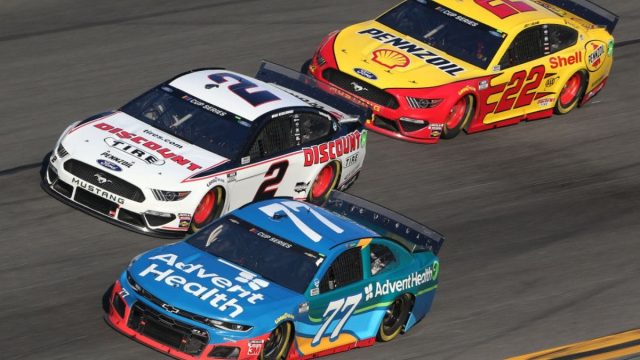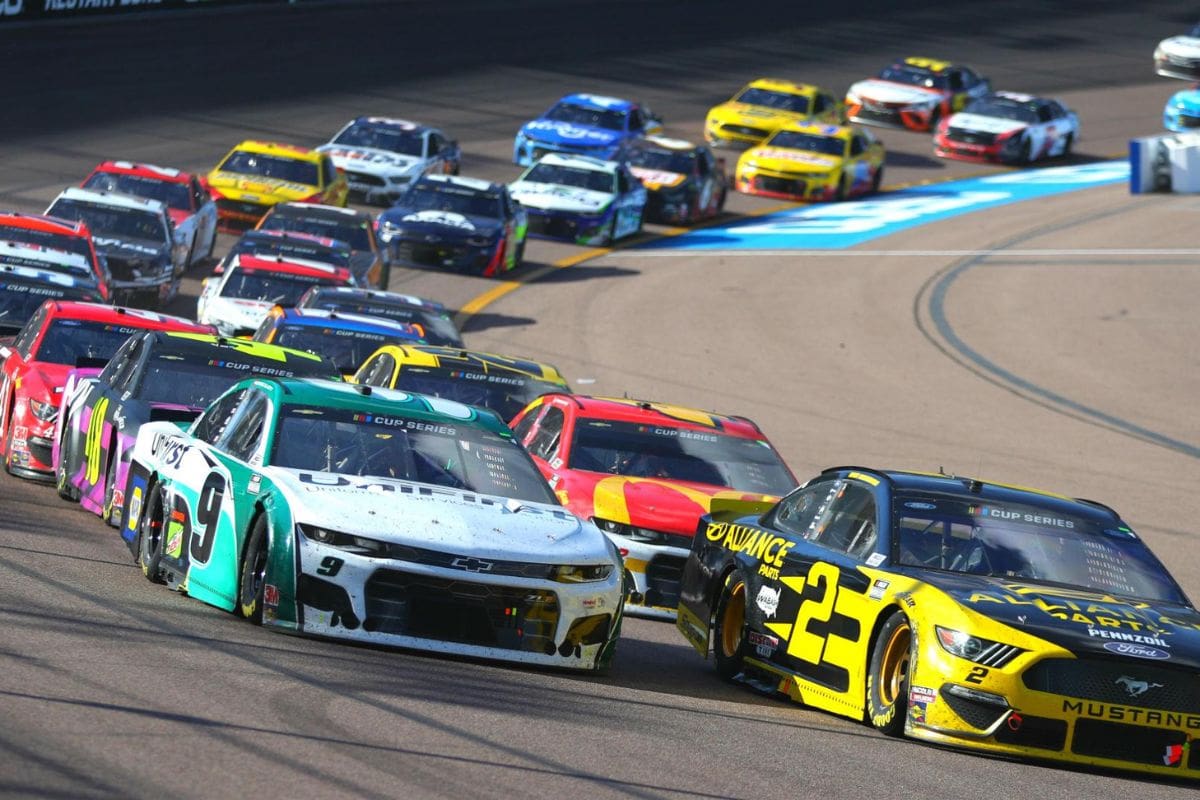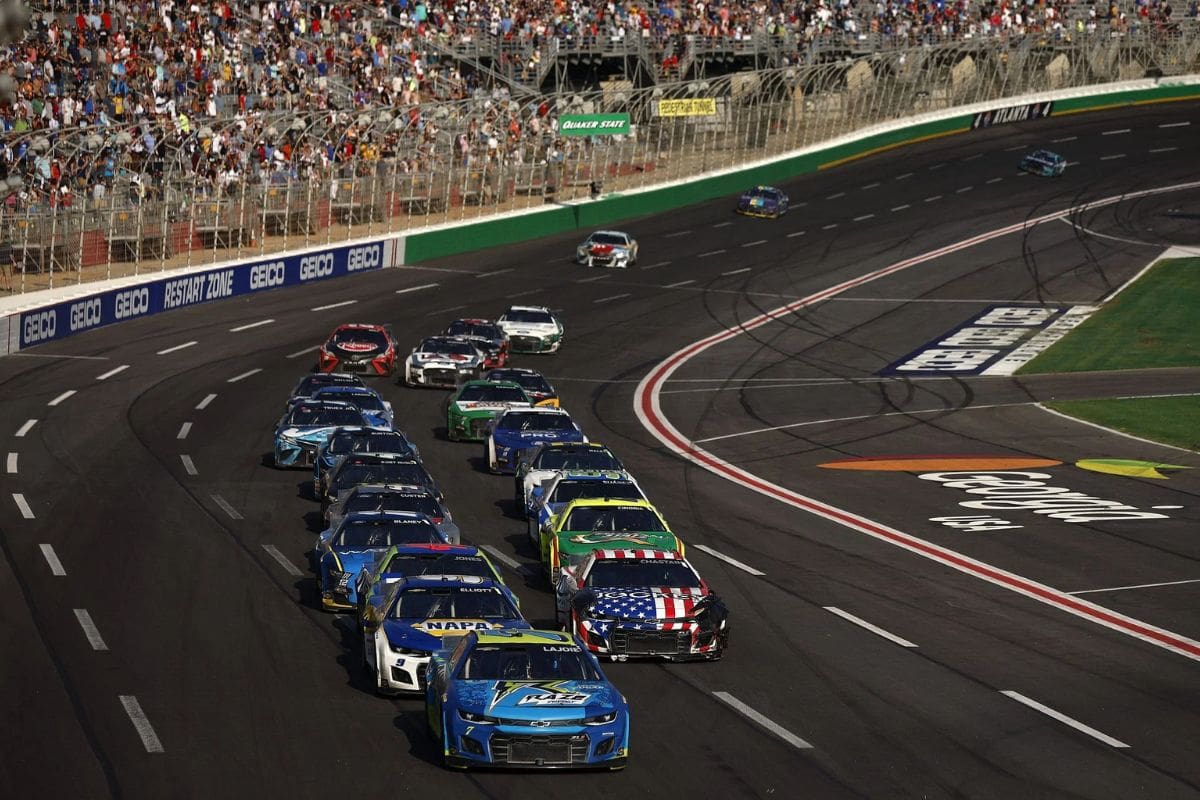2024 NASCAR Cup Playoffs Breakdown: The 2024 NASCAR Cup Playoffs are set to unfold a complex narrative of competition and strategy, as 16 elite drivers difficulty for the championship. With a knockout format that emphasizes both speed and consistency across four critical rounds, the stakes are escalated at every turn. Each round presents unique challenges that could reshape the leaderboard, coming to the end in the high-pressure Championship 4 finale at Phoenix Raceway. As we analyze the complications in this season’s playoff structure, the potential for unexpected twists raises the question: which strategies will ultimately lead to victory or despair?
Key Highlights
- The 2024 NASCAR Cup Playoffs feature a knockout-style format with 16 drivers competing across ten races for the championship title.
- Drivers earn playoff spots through wins or top points finishes, starting with 2,000 points plus bonuses for regular season achievements.
- The playoffs consist of four elimination rounds, where drivers face intense competition and tactical decisions to advance to the next stage.
- The Championship 4 format culminates in a single race at Phoenix, where the top four drivers compete for the title without stage points.
- The unpredictability of the playoffs offers thrilling drama, allowing for potential upsets and showcasing both strategy and performance under pressure.
Overview of the Playoff Format
The NASCAR Cup Playoffs represent a highly clear peak to the racing season, where the stakes are greatly raised. Following the end of the regular season, the focus shifts to the playoff format, which has evolved greatly since its inception. The current knockout-style system, is designed to heighten competition and intensify the drama as drivers vie for the championship title.
In this modern repetition, the playoffs consist of ten races, divided into four distinct rounds. Each round features a specific number of eligible drivers, beginning with a field of 16 competitors. The format introduces a series of eliminations, where the lowest-performing drivers are systematically cut from the title “the chase“. This structure emphasizes not only the need for consistent performance but also the importance of tactical decision-making, as teams must navigate different race conditions and track characteristics.
Points accumulated during the regular season play a vital role in determining playoff eligibility and initial standings. However, the real challenge lies in the postseason, where drivers must excel under immense stress, as each race can greatly alter their path toward the championship.
The playoff format has transformed the NASCAR landscape, compelling teams to adopt creative strategies and cultivating a focus on maximizing performance when it matters most. This dynamic environment fosters a unique blend of anticipation and excitement, making the NASCAR Cup Playoffs a pinnacle of motorsport competition.
Structure of the Playoffs
NASCAR’s playoff structure is a meticulous framework that combines competitiveness with tactical depth, featuring 16 contenders looking for the championship title. Following the completion of the regular season, the playoff field is established after the first 26 races, where every full-time driver securing a win is automatically locked into the playoffs. The remaining spots are filled by the top drivers based on regular-season points, ensuring that even those without victories have a path to competition. In 2024, this meant that Martin Truex Jr. and Ty Gibbs advanced on points.
Once the playoffs commence, the standings reset, with every playoff driver beginning with 2,000 playoff points. This baseline is supplemented by bonus points accrued during the regular season—five for each race win, one for each stage win, and extra points awarded to the top ten drivers in the standings prior to the reset, with the regular season champion receiving a notable 15-point increase. This tactical approach not only rewards consistency and performance but also sets the stage for high-stakes competition.
Importantly, the dynamics of the playoffs are further complicated by the presence of non-playoff drivers on the track. These competitors, motivated to claim race victories, can disrupt playoff strategies, adding an extra layer of intrigue and unpredictability to each race.
As the playoff structure unfolds, it becomes clear that the path to the championship is as much about tactical navigation as it is about raw speed and skill.
Rounds of Elimination
As the NASCAR Cup Playoffs progress, the rounds of elimination serve as a critical crossroads where only the most capable drivers can continue their championship.
The first round, known as the Round of 16, comprises three races, culminating in the elimination of the four lowest-seeded drivers. This phase typically exposes pretenders who, despite a singular win during the regular season, lack the consistency needed to advance. The combination of drafting at Atlanta, a road course at Watkins Glen, and the unpredictability of Bristol makes this round particularly dangerous.
Transitioning to the Round of 12, the stakes remain high as points are reset to 3,000, with supplementary bonus points from the previous round factored in.
This round again features three races, eliminating another four drivers. The unpredictability is heightened by the inclusion of Talladega and the Charlotte Roval, where tactical alliances and unconventional race strategies can dramatically influence outcomes.
In round 8,The points reset to 4,000, including bonus points, for another three-race stretch. This leads into the penultimate race of the season, where the bottom four drivers without a win will be eliminated. Any of the remaining eight drivers who win during this round automatically secure a spot in the championship finale. Depending on the race winners, at least one driver will advance to the final on points.
Remarkably, in 2023, A.J. Allmendinger demonstrated how short-pitting could alter the playoff landscape.
Championship 4 Format
In the high-stakes arena of the NASCAR Cup Playoffs, the Championship 4 format represents the ultimate test of skill and tactics, culminating in a winner-takes-all finale. This climactic race, held at Phoenix Raceway, sees the four remaining drivers compete for the coveted title, with their points reset to a baseline of 5,000.
Unlike previous formats, no stage points are awarded during this decisive event, making the race’s outcome straightforward: the driver who finishes highest claims the championship.
Key features of the Championship 4 format include:
- Guaranteed Pit Selection: The four contenders are afforded the privilege of selecting their pit boxes ahead of the rest, a tactical advantage that can influence race dynamics.
- No Room for Ties: The elimination of the potential for ties guarantees a clear victor, a notable shift from the earlier format where such outcomes were possible.
- Historical Context: Since the format’s inception, the champion has typically needed to win the finale to secure the title, though Ross Chastain’s unexpected victory last season as a non-playoff driver highlighted the unpredictability of the sport.
Phoenix Raceway has garnered a reputation for its wild restarts, demanding precision and focus from drivers as they navigate the track’s unique challenges.
With three of the last four champions starting from pole position, qualifying plays a crucial role in determining the championship’s outcome, highlighting the nature of racing strategy in this final showdown.
Final Thoughts on the Playoff Format
The unpredictability inherent in the NASCAR Cup Playoff format adds a thrilling dimension to the championship race, enchanting both fans and participants likewise. This format, while not necessarily the most equitable method for deciding a season champion, engenders an environment rich with potential for dramatic turns and unexpected outcomes.
The narrative of the playoffs is driven by the reality that anything can and will happen, creating a competitive landscape where no one is completely protected.
The structure of the playoffs provides underdogs with a unique opportunity into the annals of NASCAR history. This dynamic is crucial it raises the stakes, ensuring that every race carries significance and excitement. A single misstep by a favorite can lead to a occurring action, allowing lesser-known drivers to seize the moment and capitalize on the uncertainty.
This volatility is the playoffs from the regular season, where consistency often reigns supreme.
While critics may argue that the format lacks fairness, thrill it generates mesmerizes audiences and fuels the competitive spirit. The blend of strategy, performance, and sheer chance creates a multifaceted narrative that resonates with the core of motorsport enthusiasm.
News in Brief: 2024 NASCAR Cup Playoffs Breakdown
The 2024 NASCAR Cup Playoffs represent a high-stakes battleground where tactical skill and consistent performance dictate success. The knockout-style format makes the competition tougher, as drivers need to successfully get through each round of eliminations to earn a spot in the Championship 4. The final race at Phoenix Raceway is set to be an exciting finale, highlighting the skill and determination needed to win the championship. The playoff format makes the race more exciting for fans and adds to the unpredictability of motorsport
ALSO READ: 2025 NASCAR Cup Series Schedule: Key Changes, New Venues, and What to Expect



